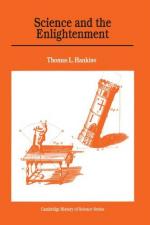
|
| Name: _________________________ | Period: ___________________ |
This quiz consists of 5 multiple choice and 5 short answer questions through Chapter 3, Experimental Physics.
Multiple Choice Questions
1. According to the narrator in Chapter 3, who became a famous doctor and chemist and initiated the Dutch program in his oration of 1715 entitled "De comparando certo in physicis"?
(a) Boerhaave.
(b) Musschenbroek.
(c) Mariotte.
(d) Newton.
2. Contemporary chemistry recognized only one element in the gaseous state, and that was the element _______.
(a) Water.
(b) Earth.
(c) Air.
(d) Fire.
3. Who was the extraordinary philosopher whose life and career exemplified many aspects of the Enlightenment, although he was not especially prominent as a natural philosopher nor was he the main protagonist in the vis viva controversy?
(a) Bernoulli.
(b) Chatelet.
(c) Voltaire.
(d) Gabrielle de Breteuil.
4. ________'s emphasis on the repulsive or expansive property of air, led naturally to an emphasis on the expansive properties of the even more subtle fluids of heat and electricity.
(a) Aristotle.
(b) Musschenbroek.
(c) Hales.
(d) Boerhaave.
5. From ________'s law of falling bodies, it was known that the heights would be proportional to the squares of the velocities at impact.
(a) Galileo.
(b) Poleni.
(c) Voltaire.
(d) Descartes.
Short Answer Questions
1. What was the name of the philosopher who was the leading scientific experimenter in seventeenth-century England, who had agreed that he had never seen any "inanimate production of nature, or of chance, whose contrivance was comparable to that of the meanest limb of the despicabilist animal"?
2. What was the name of the philosopher who carried out the following experiments: kite, electric spider, and lightning bells to study electricity?
3. In Chapter 3, who noticed that when he pulled off his silk socks in the evening, "they frequently made a crackling or snapping noise" and emitted "sparks of fire"?
4. Vis viva was thought by its creator ________ to be the dynamic quantity that was conserved in the universe, according to the narrator in Chapter 2.
5. In Chapter 3, what was the name of the experimental tradition began in Western Europe during the Renaissance?
|
This section contains 325 words (approx. 2 pages at 300 words per page) |

|




